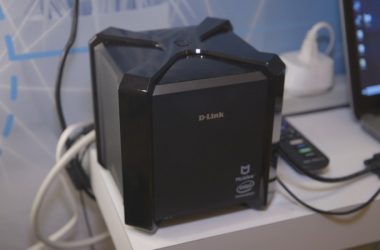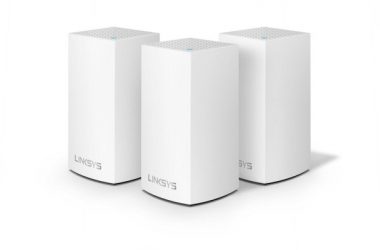
Cisco next week is expected to unveil new and enhanced data center products that are designed to more easily interconnect and allocate resources among multiple data centers and are optimized for cloud computing and virtualization.
The Cisco enhancements extend across the company’s Nexus 7000 and Catalyst 6500 and 4900M Ethernet switches as well as its Wide Area Application Services (WAAS) acceleration and Application Control Engine (ACE) load balancing appliances.
Front and center is an enhancement to the Nexus 7000’s NX-OS operating system called Overlay Transport Virtualization (OTV). This is a data center interconnect feature intended to simplify establishment of those links by extending Layer 2 Ethernet LANs across geographically dispersed data centers.
Essentially, OTV performs "MAC routing," Cisco says. OTV encapsulates and tunnels Ethernet through a routed Layer 3 infrastructure to enable multiple dispersed data centers to look like one logical entity. This allows IT administrators to move workloads and virtual machines across data centers without having to redesign or reconfigure their network, Cisco says.
This is important as more enterprises deploy, for example, VMware’s VMotion to move data center workloads across long distances for resource allocation or disaster recovery. It requires only four commands per site and can be enabled as a simple overlay over existing Layer 3 networks in just five minutes, Cisco claims.
Other data center interconnect techniques – such as MPLS or dark fiber – require months of design and planning, the company says. But what if a customer already uses MPLS with a Layer 2 tunneling technique such as pseudowires?
Click to see: List of Cisco’s upcoming waresOTV may not be needed in those cases, but it still could be used for fault isolation, and for faster, easier establishment of new data center interconnections, Cisco claims. It also alleviates the need to manage a web of individual point-to-point links, the company says.
"The routers do all of the work," says Craig Huitema, Cisco director of marketing for data center solutions.
"In theory, OTV should be a little simpler because I believe all you’re doing is an overlay that keeps the architecture of the original network the same," says Zeus Kerravala, an analyst with the Yankee Group. "With pseudowire, it requires some re-architecting of the network. You’re essentially redesigning the network with pseudowire. You’re still ripping stuff out, redesigning. And pseudowires are typically at the very high-end of the enterprise and service provider networks. This is a solution for the masses."
OTV also includes resiliency features such as multi-pathing, multi-homing and loop prevention, and it suppresses flooding of unknown Layer 2 traffic and spanning tree packets, Cisco says. This helps ensure that failures such as broadcast storms or spanning-tree loops in one data center are contained and do not propagate to other data centers, the company says.
OTV will be available on the Nexus 7000 in April. Cisco plans to also extend it to other platforms in the future. (Read how data center service provider Terremark Worldwide helped Cisco develop OTV.)
Also new for the Nexus 7000 are Gigabit Ethernet and 10G Ethernet modules with a software feature license to increase the size of routing tables and access control list capacity for growing networks. The modules come in eight-port 10G Ethernet and 48-port Gigabit Ethernet configurations, with an "XL" software license version to increase routing table entries from 128,000 to 1 million.
The 48-port XL module, due in April, costs $27,000. Pricing was not disclosed for the eight-port 10G Ethernet module.
Pricing, however, was disclosed for some new 10GBase-T modules for Cisco’s Catalyst 6500 and 4900M switches. For the Catalyst 6500 with a Supervisor 720 engine, Cisco unveiled a 16-port 10GBase-T module at a list price of $22,500. It extends copper connectivity to 330 feet for server interconnection, and is intended as a lower cost alternative to fiber-based 10G connections on the Catalyst 6500.
For the 4900M top of rack switch, Cisco rolled out an eight-port 10GBase-T module that costs $3,500. It, too, allows twisted pair copper cabling connections to servers at 330 feet.
Both modules will be available in the second quarter.
Lastly, Cisco enhanced both its WAN acceleration and load balancing appliances – WAAS and ACE, respectively – for cloud, software-as-a-service (SaaS) and virtualization environments. WAAS can now recognize cloud-based and SaaS applications, such as Cisco WebEx, and automate security and optimize the application delivery, Cisco says.
Enterprises typically access public or private cloud hosted applications through central corporate data centers using SSL encrypted links, and then distribute them from the data center to remote sites with SSL encryption. With the WAAS enhancements, the SSL connection setup is automated and the link optimized for the particular cloud or SaaS applications, Cisco says.
ACE, meanwhile, will include a plug-in software module that allows users of VMware virtualization software to provision and more easily monitor VMs from a single VMware vCenter management console. The software plug-in is essentially an API that integrates Cisco’s Application Networking Manager suite for ACE with the vCenter console, allowing users to balance workloads across VMs from a single dashboard.
WAAS is available now while ACE will be in March.
Separately, Cisco says it will ship Fibre-Channel-over-Ethernet modules on the Nexus 7000 and MDS SAN switches in the second half of the year. These will extend Cisco’s Unified Fabric strategy to the data center core and storage connectivity areas. Currently, FCoE is shipping on the Nexus 5000 server access switch.
Layer 2 overlay, 10GBase-T, cloud and virtualization optimization expected





